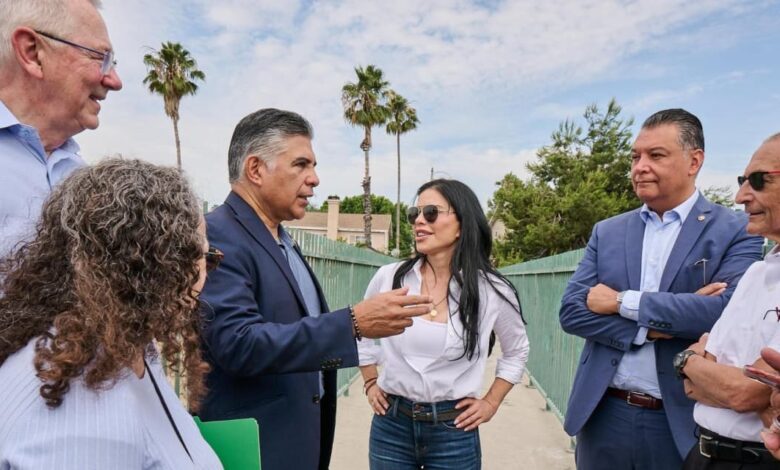Jeff Bezos Is Spending US$400 Million to Make Underserved Communities Greener

In the West Woodlawn neighborhood of Chicago’s South Side, the nonprofit Blacks in Green has been creating a “sustainable square mile” built around creating self-sustaining Black communities that are walkable with plentiful plant-filled spaces and locally sourced jobs.
This effort for tackling pollution and poverty got a huge boost last week with a US$1.5 million grant from the Bezos Earth Fund, a US$10 billion philanthropic initiative to combat climate change from
founder Jeff Bezos.
The grant to Blacks in Green, an environmental economic development group, is one of nine totaling US$10.1 million that the fund made to organizations in Chicago to finance more parks, trees, and community gardens. It’s also among several that will be part of the Earth Fund’s US$400 million, seven-year “Greening America’s Cities” initiative.
The funding will boost green spaces in underserved urban areas throughout the country beginning with US$50 million in grants to 30 organizations in Albuquerque, N.M., Atlanta, Los Angeles, and Wilmington, Del., in addition to Chicago.
The funding will bring clear environmental, climate, and health benefits to neighborhoods, but it is the Earth Fund’s commitment to environmental justice that really drove this initiative, says Andrew Steer, president and CEO of the Earth Fund.
“Generally it’s the underserved, the less fortunate Black, brown and indigenous areas that suffer the most from environmental damage and they’ve often done the least to cause it,” Steer says.
Advertisement – Scroll to Continue
Greening underserved urban areas is also a practical way to solve climate change that can produce tangible results for citizens.
“Areas of cities that have no green spaces can be nine degrees hotter in the summer, and as a result, death rates rise, air conditioning bills rise, student performance in school falls,” Steer says. But, adding trees and bushes and grass to urban areas can absorb tons of pollution and can lead to 25% lower rates of childhood asthma, improving physical and mental health for residents, he says.
Instead of relying on national environmental groups that work on greening cities to realize its goals, the Earth Fund decided to seek out community organizations. “We believe in front-line leadership and therefore [decided], ‘Let’s send them the checks rather than intermediate them through others,’” Steer says.
Advertisement – Scroll to Continue
Answering the question of which cities to target and which groups to fund is challenging—“You never get that right,” he says—so they decided to only disperse a portion of the US$400 million to a few dozen groups so that they could figure out what was most effective.
“We will learn which groups we missed, which groups need to be doubled up with more financing, [and] which groups maybe have tried their best, but actually, it’s not working out,” Steer says.
The fund also will have full-time, locally based staffers working with the grantees to support their efforts, and they will be monitoring the effectiveness of different methods—including which species of trees are best at absorbing carbon or at thriving in certain environments.
Advertisement – Scroll to Continue
As for what cities were selected in this first round, Steer says they focused on those that demonstrated political leadership and commitment to the project, from community organizers and mayors up through to U.S. senators.
The senators the fund worked with “actually think this is incredibly important for all kinds of bigger issues relating to equity and the quality of life for their citizens,” he says.
The Earth Fund grants also are intended to build on the federal government’s push to boost equitable access to trees and green spaces in urban and community forests. The Inflation Reduction Act of 2022 included US$1 billion in grant funding that is also intended to advance the Biden administration’s Justice40 initiative, which ensures 40% of the overall benefits of certain federal investments reach disadvantaged communities.
Advertisement – Scroll to Continue
For Blacks in Green, the money will be transformative. Before receiving the grant, the nonprofit said it “struggled to keep pace with our horticultural vision and needs, managing a substantial portfolio of ecological parcels with no program funding for staff, equipment, or materials,” according to a news release.
The sustainable square mile is a program that the nonprofit is piloting in the West Woodlawn neighborhood, but it is also beginning similar efforts in neighborhoods in other cities, including Cleveland, Miami, and Detroit. The idea is to essentially create green villages across the country that follow its principles of building wealth in Black communities through ownership, renewable energy, recycling, and urban homesteading, among other practices.
“It’s a comprehensive approach to rebuild in a way that is truly sustainable and regenerative from the standpoint of a focus on building new economies,” says David Yocca, the group’s director of green infrastructure.
Advertisement – Scroll to Continue
The idea is to build a “horticultural economy,” where people are trained to create and maintain high-performance landscapes that are beautiful, but moreover, serve valuable functions such as absorbing rainwater, reducing heat, and creating urban wildlife habitat.
It’s also about creating new businesses “that are operating in the space so that people in the community are working in their community and the dollars are staying locally,” Yocca says.
With the new funding, the group will hire eight full-time staff members, and provide staff training, in addition to purchasing equipment and acquiring and developing land for green spaces and for affordable housing, Yocca says.
Should Blacks in Green or any other group that demonstrates effectiveness and an ability to scale need more funding, it’s possible they could get it in the future.
“One of the nice things about being a fund like ours is we can be incredibly flexible so we can add funding to the same groups next year. We can support some of these same cities again,” Steer says.



